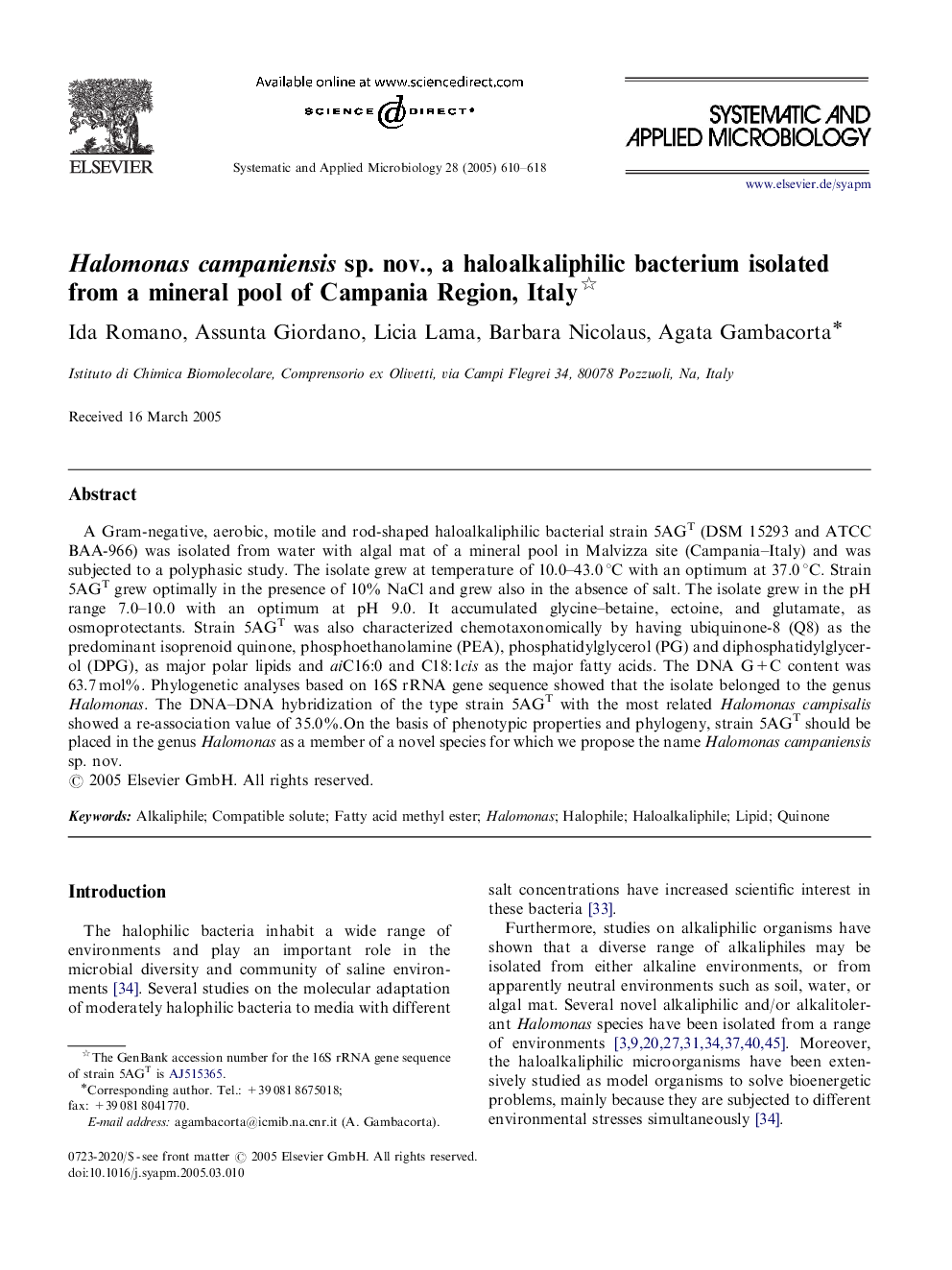| Article ID | Journal | Published Year | Pages | File Type |
|---|---|---|---|---|
| 10879455 | Systematic and Applied Microbiology | 2005 | 9 Pages |
Abstract
A Gram-negative, aerobic, motile and rod-shaped haloalkaliphilic bacterial strain 5AGT (DSM 15293 and ATCC BAA-966) was isolated from water with algal mat of a mineral pool in Malvizza site (Campania-Italy) and was subjected to a polyphasic study. The isolate grew at temperature of 10.0-43.0 °C with an optimum at 37.0 °C. Strain 5AGT grew optimally in the presence of 10% NaCl and grew also in the absence of salt. The isolate grew in the pH range 7.0-10.0 with an optimum at pH 9.0. It accumulated glycine-betaine, ectoine, and glutamate, as osmoprotectants. Strain 5AGT was also characterized chemotaxonomically by having ubiquinone-8 (Q8) as the predominant isoprenoid quinone, phosphoethanolamine (PEA), phosphatidylglycerol (PG) and diphosphatidylglycerol (DPG), as major polar lipids and aiC16:0 and C18:1cis as the major fatty acids. The DNA G+C content was 63.7 mol%. Phylogenetic analyses based on 16S rRNA gene sequence showed that the isolate belonged to the genus Halomonas. The DNA-DNA hybridization of the type strain 5AGT with the most related Halomonas campisalis showed a re-association value of 35.0%.On the basis of phenotypic properties and phylogeny, strain 5AGT should be placed in the genus Halomonas as a member of a novel species for which we propose the name Halomonas campaniensis sp. nov.
Related Topics
Life Sciences
Agricultural and Biological Sciences
Ecology, Evolution, Behavior and Systematics
Authors
Ida Romano, Assunta Giordano, Licia Lama, Barbara Nicolaus, Agata Gambacorta,
